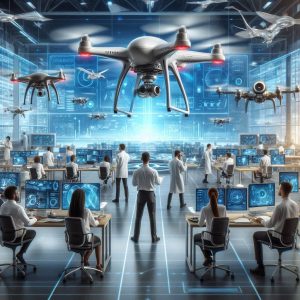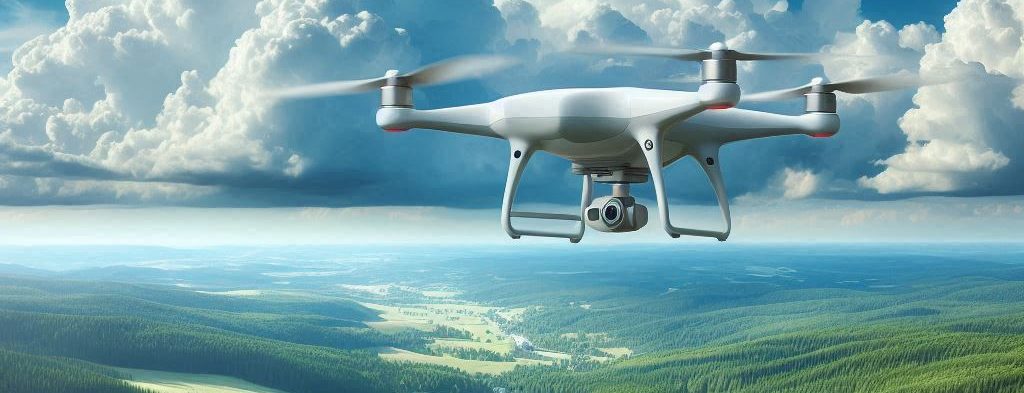Category: Innovation
 Innovation in drone technology is driving unprecedented advancements across multiple industries. This category explores the latest breakthroughs and creative solutions that are redefining the capabilities of drones. From cutting-edge hardware to groundbreaking software applications, innovation is at the core of the evolving drone ecosystem.
Innovation in drone technology is driving unprecedented advancements across multiple industries. This category explores the latest breakthroughs and creative solutions that are redefining the capabilities of drones. From cutting-edge hardware to groundbreaking software applications, innovation is at the core of the evolving drone ecosystem.
Breakthrough Hardware Technologies
1. Advanced Propulsion Systems
- Electric Propulsion: Innovations in electric propulsion systems are enhancing the efficiency, flight time, and environmental sustainability of drones.
- Hybrid Propulsion: The development of hybrid propulsion systems combines the benefits of electric and combustion engines, providing extended flight times and greater versatility.
2. Lightweight Materials
- Composite Materials: The use of advanced composite materials, such as carbon fiber and graphene, is reducing the weight of drones while increasing their strength and durability.
- Flexible Structures: Innovations in flexible and adaptive structures allow drones to withstand harsh conditions and perform complex maneuvers with ease.
3. Enhanced Power Sources
- Solar-Powered Drones: Solar cells integrated into drone surfaces harness solar energy, extending flight durations and enabling long-endurance missions.
- Fuel Cells: The development of hydrogen fuel cells provides a sustainable and efficient power source for drones, enhancing their range and operational capabilities.
Groundbreaking Software Applications
1. Autonomous Flight Control
- AI-Powered Autonomy: Artificial intelligence enables drones to perform complex tasks autonomously, such as obstacle avoidance, path planning, and mission execution.
- Swarm Technology: Swarm technology allows multiple drones to coordinate and collaborate on tasks, increasing efficiency and scalability in various applications.
2. Real-Time Data Processing
- Edge Computing: Innovations in edge computing enable drones to process data in real-time, providing immediate insights and reducing the need for constant communication with ground stations.
- Cloud Integration: Seamless integration with cloud platforms allows drones to store, analyze, and share data, enhancing their utility in data-driven applications.
3. Enhanced Navigation Systems
- GNSS and RTK: Advanced Global Navigation Satellite Systems (GNSS) and Real-Time Kinematic (RTK) technology provide precise positioning and navigation, critical for high-accuracy applications.
- Visual SLAM: Simultaneous Localization and Mapping (SLAM) technology uses visual data to create real-time maps and navigate complex environments.
Innovative Applications
1. Urban Infrastructure
- Smart Cities: Drones are being integrated into smart city frameworks, providing real-time monitoring, traffic management, and infrastructure inspection.
- Public Safety: Innovative drone applications in public safety include surveillance, emergency response, and crowd management, enhancing urban security and resilience.
2. Environmental Sustainability
- Precision Agriculture: Drones equipped with advanced sensors are optimizing agricultural practices, reducing resource consumption, and increasing crop yields.
- Conservation Efforts: Innovative drone applications in conservation include monitoring wildlife, tracking illegal activities, and supporting habitat restoration efforts.
3. Creative Industries
- Filmmaking and Photography: Drones are revolutionizing the creative industries, providing new perspectives and creative possibilities in filmmaking, photography, and media production.
- Artistic Performances: Drones are being used in artistic performances and events, creating dynamic visual displays and interactive experiences.
Advantages of Innovation
- Enhanced Capabilities: Continuous innovation in drone technology is expanding their capabilities, enabling new applications and improving existing ones.
- Increased Efficiency: Innovative solutions are increasing the efficiency and effectiveness of drone operations, reducing costs and resource consumption.
- Sustainability: Advances in sustainable technologies are minimizing the environmental impact of drones, promoting eco-friendly practices across industries.
Ethical and Legal Considerations
- Regulatory Frameworks: Ensuring that innovation aligns with regulatory frameworks is essential for the safe and legal operation of drones.
- Ethical Use: Emphasizing ethical considerations, such as privacy, security, and environmental impact, ensures that innovative drone applications benefit society responsibly.
Future Prospects
- Continuous Advancements: Ongoing research and development will lead to continuous advancements in drone technology, driving further innovation and expanding their potential.
- Global Collaboration: Collaborative efforts between governments, industry leaders, and research institutions will accelerate the adoption of innovative drone solutions worldwide.
- New Frontiers: Future trends in innovation will explore new frontiers, such as space exploration, autonomous delivery systems, and human-robot interaction.

